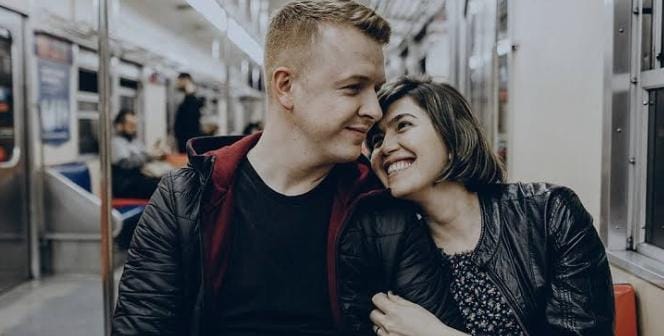Australia’s Subclass 100 Partner Visa is a key pathway for non-citizens in genuine relationships with Australian citizens or permanent residents to secure permanent residency. This visa enables spouses or de facto partners to live, work, and study in Australia permanently. However, the process of applying for this visa is intricate and requires thorough preparation, proper documentation, and strategic timing.
How to Successfully Apply for the 100 Partner Visa in Australia
We’re here to explain how the 100 Partner Visa process works, helping you understand what’s required and how to prepare a strong application. The Subclass 100 Visa is the second stage of a two-part application process:
- Subclass 309 (Temporary Partner Visa): Granted first to applicants outside Australia, allowing them to enter and live temporarily.
- Subclass 100 (Permanent Partner Visa): Granted about 2 years after the 309 application, if the relationship is still ongoing and genuine.
For applicants inside Australia, the equivalent stages are the 820 (temporary) and 801 (permanent) partner visas.
Key Eligibility Requirements
To be eligible for the Subclass 100 visa, you must:
- Hold a valid Subclass 309 Partner Visa.
- Be in a genuine and continuing relationship with your sponsor (Australian citizen, permanent resident, or eligible New Zealand citizen).
- Meet the health and character requirements.
- Have a relationship history that continues to satisfy the Department of Home Affairs (i.e., no separation or false claims).
Step-by-Step Process to Apply for the Subclass 100 Partner Visa
Here is a guide to help you through the process of applying for the 100 Partner Visa, ensuring your application has the best chance of success.
1. Understand the Two-Stage Process
You don’t apply for the 100 visa separately. When you submit your initial 309 application, you’re automatically considered for the 100 visa in the future. However, about two years after lodging the 309, the Department invites you to provide additional documentation for the permanent stage (Subclass 100).
2. Prepare Early for the Permanent Stage
You can prepare for the 100 visa even before you receive the Department’s request. Maintain evidence of your relationship during the 2-year waiting period, including:
- Joint bank accounts
- Shared bills or leases
- Photos of significant life events
- Social media posts or invitations
- Statutory declarations from friends and family
Consistency is key—show your relationship has developed and matured over time.
3. Gather Documents for the Subclass 100 Assessment
When the Department notifies you to submit documents for the 100 visa, ensure you include:
- Updated relationship statements from both partners
- Joint financial documents (bank statements, shared assets)
- Proof of social interdependence (shared travel, events, friendships)
- Proof of cohabitation (leases, utility bills)
- Form 888s: Statutory declarations by two Australian citizens or permanent residents confirming your relationship
- Police checks (if you have lived in another country for 12+ months)
You should submit this within the deadline specified in your invitation letter (usually 28 days).
4. Demonstrate the Four Pillars of a Genuine Relationship
The Department evaluates relationships based on four core criteria:
- Financial aspects: joint ownership, shared expenses, pooled resources
- Nature of the household: shared responsibilities, living arrangements
- Social aspects: how others view your relationship, joint social activities
- Nature of commitment: long-term intentions, emotional support, communication
Document your relationship with each of these aspects in mind.
5. Stay Up to Date With Health and Character Checks
While not always required again, the Department may ask for updated:
- Health examinations
- Police clearances (especially if you’ve lived overseas since the 309 was granted)
Get these completed as soon as requested to avoid processing delays.
6. Be Prepared for an Interview (if requested)
Sometimes, the Department may call or interview you and/or your partner. Typical questions may include:
- How did you meet?
- What do you like about your partner?
- Who does the cooking/cleaning?
- Details of your wedding or anniversaries
- Plans together
Remain calm, honest, and consistent. Discrepancies between partners’ answers can lead to red flags.
7. Monitor Application Progress
You can track the status of your visa application through your ImmiAccount. Processing times vary, but the Subclass 100 visa typically takes 12–24 months after you submit additional evidence.
Tips to Maximize Your Chances of Success
- Keep consistent records of your relationship—photos, bank records, chat logs, and lease documents.
- Use a registered migration agent if your case is complex (previous visa refusals, long-distance relationship, minimal cohabitation).
- Update the Department of any changes (address, contact details, changes in relationship status).
- Respond promptly to all requests for information or documentation.
- Avoid misrepresentation—false claims or forged documents can lead to visa refusal and bans.
What Happens After the Subclass 100 Visa Is Granted?
Once approved, the Subclass 100 visa allows you to:
- Live, work, and study in Australia permanently
- Sponsor eligible family members
- Access Medicare and some social security benefits
- Apply for Australian citizenship (after meeting residency and character requirements)
Final Thoughts
Applying for the Subclass 100 Partner Visa can be a long and emotionally involved process, but with the right preparation, clear documentation, and consistent demonstration of your relationship, it can also be highly rewarding. Whether you navigate it yourself or engage a migration consultant, ensure your story is clear, honest, and well-supported by evidence.


Post a Comment